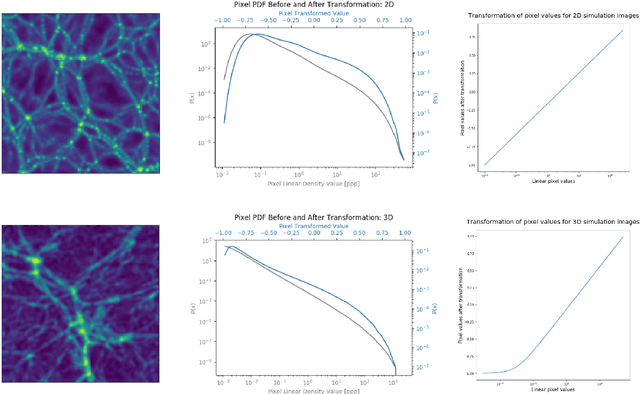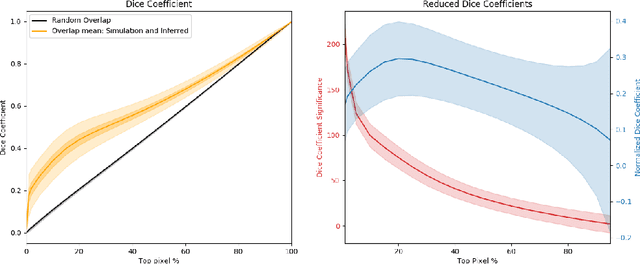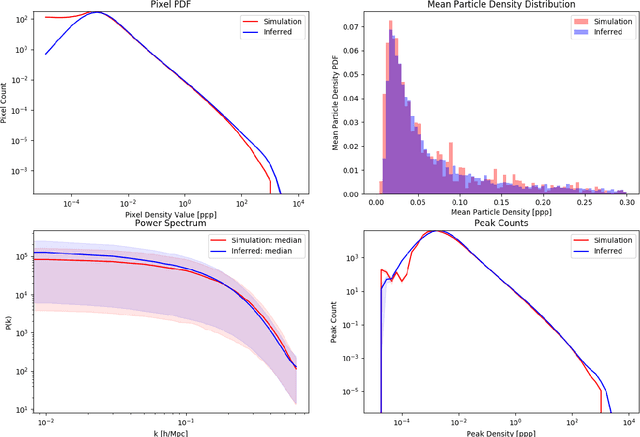Marion Ullmo
Predicting large scale cosmological structure evolution with GAN-based autoencoders
Mar 04, 2024



Abstract:Cosmological simulations play a key role in the prediction and understanding of large scale structure formation from initial conditions. We make use of GAN-based Autoencoders (AEs) in an attempt to predict structure evolution within simulations. The AEs are trained on images and cubes issued from respectively 2D and 3D N-body simulations describing the evolution of the dark matter (DM) field. We find that while the AEs can predict structure evolution for 2D simulations of DM fields well, using only the density fields as input, they perform significantly more poorly in similar conditions for 3D simulations. However, additionally providing velocity fields as inputs greatly improves results, with similar predictions regardless of time-difference between input and target.
Encoding large scale cosmological structure with Generative Adversarial Networks
Nov 10, 2020



Abstract:Recently a type of neural networks called Generative Adversarial Networks (GANs) has been proposed as a solution for fast generation of simulation-like datasets, in an attempt to bypass heavy computations and expensive cosmological simulations to run in terms of time and computing power. In the present work, we build and train a GAN to look further into the strengths and limitations of such an approach. We then propose a novel method in which we make use of a trained GAN to construct a simple autoencoder (AE) as a first step towards building a predictive model. Both the GAN and AE are trained on images issued from two types of N-body simulations, namely 2D and 3D simulations. We find that the GAN successfully generates new images that are statistically consistent with the images it was trained on. We then show that the AE manages to efficiently extract information from simulation images, satisfyingly inferring the latent encoding of the GAN to generate an image with similar large scale structures.
 Add to Chrome
Add to Chrome Add to Firefox
Add to Firefox Add to Edge
Add to Edge